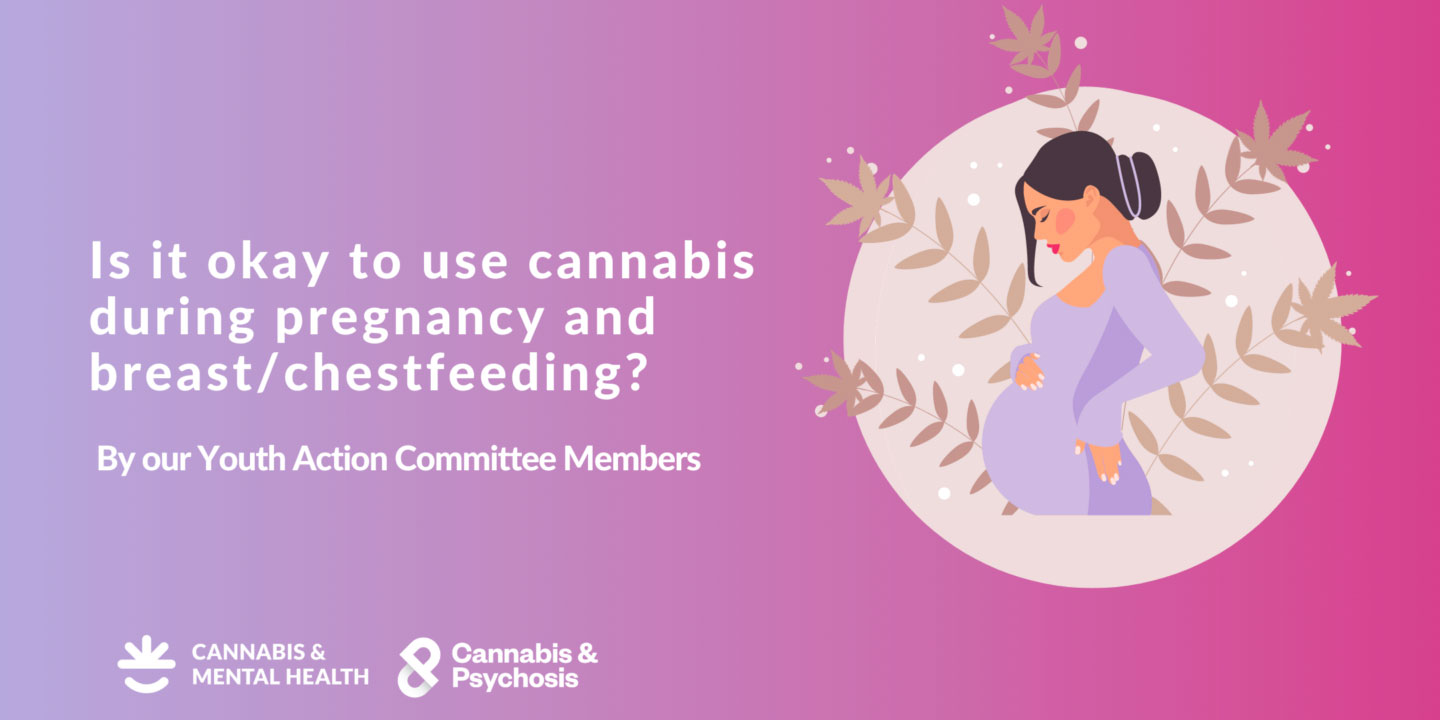There are a lot of opinions on the topic of cannabis use during pregnancy and breast/chestfeeding, but what is the research saying? Since the legalization of cannabis in 2018, 4-11% of people have reported using cannabis at least once while pregnant and/or nursing, making it the second most used psychoactive substance after alcohol. Cannabis use by pregnant and lactating people is thought to be increasing, though it is difficult to accurately establish the prevalence of cannabis use in pregnancy and the postpartum period.
People choose to use cannabis while pregnant or nursing for various reasons. Pregnant people have reported using cannabis to manage pregnancy-related conditions (e.g., nausea, weight gain, sleep difficulty) and pre-existing conditions (e.g., mental health, insomnia, chronic pain), as well as to improve mood, mental, physical and spiritual well-being, provide pleasure and manage stress.
If people report that it can help them manage symptoms, why are there concerns about cannabis use during pregnancy and lactation? Evidence shows that exposure to certain cannabinoids (THC and CBD) can have a range of long-lasting effects on the developing baby because cannabinoids can permeate the placenta as well as remain present in breast milk for up to 6 days. Some of the potential impacts include:
- Preterm birth
- Neurodevelopmental impacts
- Cognitive, social, and motor impacts
- Low birth weight
- Drowsiness and disturbed sleep
- Reduced memory function
- Increase in hyperactive, impulsive, and aggressive behaviour.
The Endocannabinoid system (ECS) regulates nausea, pain and appetite, which plays a vital role in pregnancy, more specifically, the maintenance of the implantation, the placenta and prenatal development. THC (the main psychoactive ingredient resulting in the “high”) is linked with most of the effects people associate with cannabis. Since THC interacts with the ECS, it may have lingering and prolonged effects on prenatal development.
In 2019, a Canadian study investigated whether pregnant people would be advised to use cannabis during pregnancy for symptoms such as nausea and anxiety. It found that 93% of dispensaries in Canada advised against the use – a vast difference from the initial study done in Colorado, where 70% recommended use in the first trimester.
So, how can pregnant and lactating people reduce potential harms
- Use cannabis products containing less THC
- Consume cannabis less often ( up to 1x /week)
- Refrain from smoking cannabis (edibles and oils are shown to have a softer effect)
- Only use cannabis from government-regulated dispensaries
- Avoid mixing cannabis with other substances (tobacco, alcohol, other medications)
There are also many alternatives for treating nausea during pregnancy:
- Stay hydrated
- Eat small meals and snacks throughout the day
- Consume salty foods such as crackers or chips
- Drink or eat ginger-based products to aid in digestion
- Use Dimenhydrinate (Gravol) to decrease nausea symptoms
- Sleep and nap throughout the day
Watch our Ask the Expert recording of our panel discussion on Navigating Cannabis During Pregnancy & Chest/Breastfeeding, in partnership with the Native Womens Association of Canada here:
The video features
Lee Allison Clark (she/her) Moderator
Director of Health; Native Women’s Association of Canada
Marisa Blake (she/her) Panelist
Senior Project Officer; Native Women’s Association of Canada
Gabrielle Griffith (they/them) Panelist
Doula, Educator, Speaker
Resources
You will find some great resources on this subject here:
- Native Women’s Association of Canada
- Cannabis and Your Health
- Cannabis and Pregnancy, Lactation and Fertility
- Parenting and Cannabis
- Wading through the Weeds
- A Public Health Response to Supporting Pregnant and Breast/Chest Feeding People Who
Consume Cannabis. By Saara Greene and Gabrielle Griffith (video) - PregnancyInfo.ca
- The Society of Obstetricians and Gynaecologists of Canada (SOGC)
- Essential Resources
Other research
- The Society of Obstetricians and Gynaecologists of Canada (SOGC). Legal Cannabis Not Worth Risk for Pregnant Women. Why Risk It?
- Davis, Lee, T., Weber, J. T., & Bugden, S. (2020). Cannabis use in pregnancy and breastfeeding: The pharmacist’s role. Canadian Pharmacists Journal / Revue Des Pharmaciens Du Canada, 153(2), 95–100.
- Moss, M. J., Bushlin, I., Kazmierczak, S., Koop, D., Hendrickson, R. G., Zuckerman, K. E., & Grigsby, T. M. (2021). Cannabis use and measurement of cannabinoids in plasma and breast milk of breastfeeding mothers. Pediatric Research, 90(4), 861-868.
- NIDA. 2019, August 9. Is Cannabis (Marijuana) Safe to Use While Pregnant or Breastfeeding? Retrieved from https://nida.nih.gov/publications/cannabis-safe-to-use-while-pregnant-or-breastfeeding on 2023, September 8.
By Aislin McWilliam
Research by:
- Alsa St Rose
- Redait Kashwani
- Shanice Nyawira
- Tya Thompson



